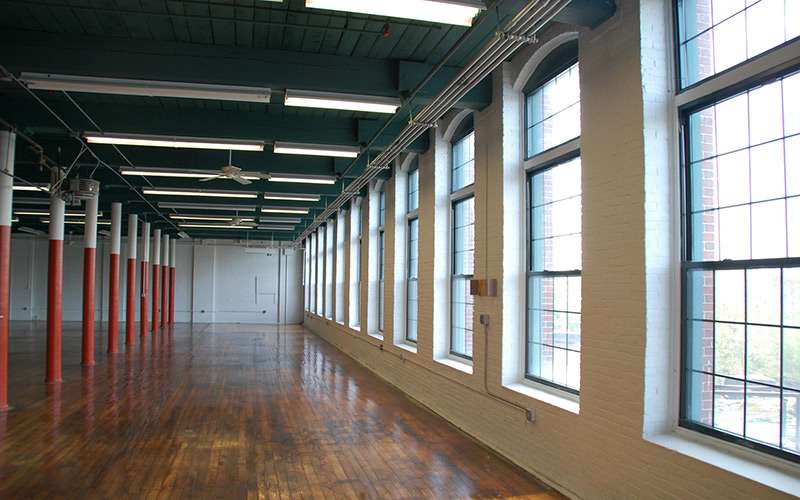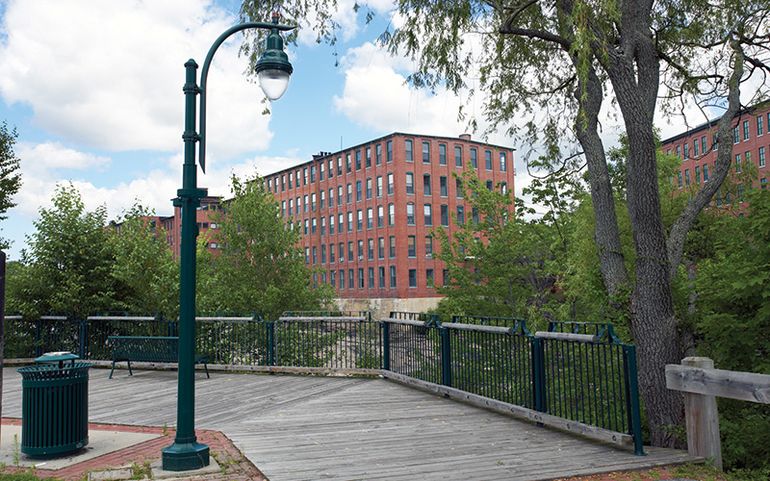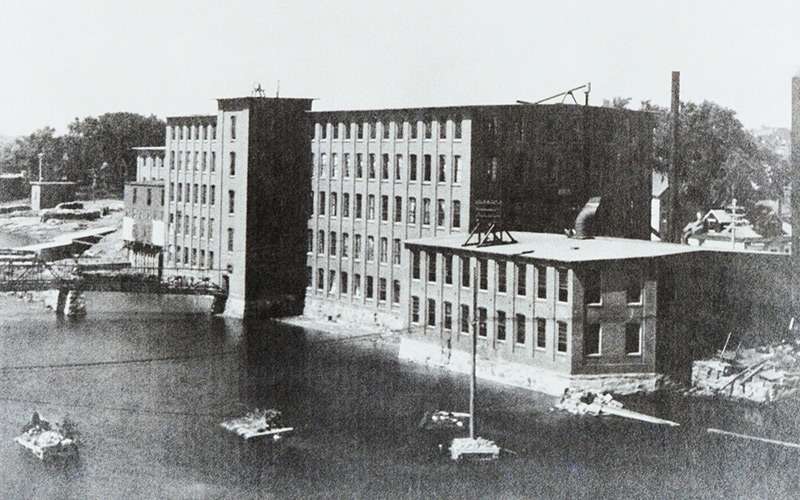
New owner of Westbrook's Dana Warp Mill is bullish on the property's potential
 Courtesy / The Boulos Co.
Chinburg Properties purchased the Dana Warp Mill with further development in mind for either residential or commercial use.
Courtesy / The Boulos Co.
Chinburg Properties purchased the Dana Warp Mill with further development in mind for either residential or commercial use.
Chinburg Properties, of Newmarket, N.H., has purchased the historic Dana Warp Mill in Westbrook from DWM LLC for $5.15 million.
The 246,108-square-foot, four-story building is located at 90 Bridge St. and overlooks the Presumpscot River.
Nate Stevens and Jon Rizzo of The Boulos Co. brokered the deal, which closed Dec. 14.
Stevens told Mainebiz that the selling entity, DWM LLC, is owned by Peter Cook.
Cook is the son of Aleksandar Cook, who in 2011 purchased the $4.8 million loan on the redeveloped mill building from Bank of America after the mill’s previous owner, Tim Flannery of Flannery Properties, defaulted on the mortgage. Flannery had bought the building in 1997 and turned it into a multi-use office building. At the time Cook bought it, the mill was 70% full, with 40 tenants.
Seeking the right buyer
Peter Cook took over full ownership several years ago, Stevens said. The Cook family continued to make major improvements, including a new roof and an updated heating system, after they purchased the building, he said.
Stevens said Cook decided it was the right time to sell the mill, which was never formally on the market. Boulos spoke with three potential buyers. Stevens said for Cook it was important that the mill go to the right person who would shepherd the property to the next era.
“It’s a wonderful asset for downtown Westbrook,” Stevens said, adding that it takes a particular type of buyer to purchase a mill.
“Sometimes these mills are old, things need to be fixed, and how do you manage the tenants? So there are only certain buyers interested in this type of product,” he said. “You have to understand the market. The Dana Warp Mill is a fabulous building — you have a great mix of tenants. But it really takes some understanding to know how to manage all of those tenants and how to maintain a historic building.”
Mill redevelopment niche

Eric Chinburg, Chinburg Properties president and CEO, told Mainebiz he’s redeveloped over a dozen historic mills. “That’s our niche,” he said.
He had first looked at the Dana Warp Mill a year ago. At that time, the seller wasn’t quite ready to sell.
“It’s a beautiful property,” Chinburg said.
The mill is still about 70% full, he said, and its condition is very good.
“Our plan is to continue to improve the property the way the previous owner had been doing,” he said. “We’ve become experienced at taking vacant portions of commercially occupied mills and adding nice apartments. So over time, as room opens up or if we can shift something around, we might try to add residential units. Our experience has shown that, when there are parking constraints, as there is with this property, you can add residential uses without impacting parking because, typically, residents use parking space at different hours than commercial tenants do. So our goal is to cherish the existing tenants and to try to get the building fully occupied by adding residential tenants use over time.”
At the same time, Chinburg is also looking for commercial tenants.
“If it were 100% full and we could work out the parking concerns, we wouldn’t need to add residential,” he continued. “We like having mixed uses. It makes it a dynamic part of the community, where there are people who are living and working. But it’s not a requirement. As we become more knowledgeable of the property and our tenants, we’ll evolve to getting the building full. Whether that’s with more commercial or residential is to be determined.”
The property comes with about 90 parking spaces, plus some commercial spaces, he noted.
The overall scope of Chinburg’s company includes a division that does single-family home development, plus its mill division, which includes acquiring often abandoned mill properties and doing the redevelopment themselves, through the company’s construction arm. Then the company owns and manages the mills for the long term, he said. All together, the company owns “in the millions of square feet” of property in Maine, Massachusetts and New Hampshire, he said.
According to its website, the company was founded in 1987 as Chinburg Builders. It’s grown from a small family business to the largest builder of homes in the Seacoast region. It’s had four mill projects in 2018, with an estimated 300 businesses operating out of the company’s overall mill portfolio.
Love for old buildings

Chinburg’s first mill redevelopment was in 1996, at 1001 Islington St. in Portsmouth. That property, now called Millport, was redeveloped into apartments. Chinburg purchased the mill and other buildings from a locally prominent developer named Joe Sawtelle, whom Chinburg credits as a mentor.
“I got into it because I always had a love for these old buildings,” Chinburg said.
While the Dana Warp Mill is in good shape, there are typically a number of challenges involved in mill redevelopment, he said. “Often there are environmental concerns that need to be handled,” he said. “Sometimes parking concerns are a challenge because they’re often large properties in dense downtown areas. In the days the mills were built, parking wasn’t a concern. A lot of the mill workers just lived nearby and walked. Occasionally there are structural concerns, disrepair or rot. But often the structural integrity of the building is surprisingly good.”
The biggest challenge, he said, is whether or not there’s enough vibrancy to the marketplace to answer the question of “If you build it, will they come?” he said. “And that’s one of the heartbreaking things, because as we get involved in looking at mill properties in farther-flung communities, there are some beautiful old mills but it’s difficult to make the economics work.”
According to the Chinburg website, in Maine the company developed Saco Mill No. 4, with most of the other mills being in New Hampshire.










Comments